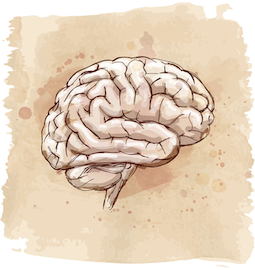For myself, I most definitely have a bad habit of trying to learn from multiple fields at once. This works poorly for me, as I only digest the trivia and superficial knowledge - the deeper aspects elude me, somewhat, in this mode.
The classic sign that I have fallen back into this habit (the desperate trying to learn everything at once for fear of not-knowing; and the over-fascination with book knowledge in general) are having more than 5 books 'going' at the same time, on different topics (In the past I have had up to twelve part-finished books - most definitely information constipation).
So whilst I love expert generalism, this trying to do everything at once style learning (and I believe it applies to physical knowledge and skills, too) is not efficient or effective (two of my primary lenses).
Much better to focus on one (or two related) areas for a period of time (I'm still tweaking this aspect, and would love to hear from other via PM or post, if you've tried similar learning strategies), say 12 weeks (a bit arbitrary - but easier than saying 'until you know the area well' or 'until you have reached the next stage, or are getting diminishing returns on time/energy put in), then move on to a new topic (or activity, if body-knowledge).
This also brings me to another aspect of knowledge I have been pondering - is it better to re-read a classic, than read, say ten, new books than are good to very good? Or, as Gurdjieff puts it at the beginning of one of his books :
"I find it necessary on the first page of this book, quite ready for publication, to give the following advice: 'Read each of my written expositions thrice:
Firstly- at least as you have already become mechanized to read all your contemporary books and newspapers.
Secondly - as if you were reading aloud to another person.
And only thirdly - try and fathom the gist of my writings."
Friendly Advice, (written upon handing the finished manuscript to the printer, Beelzebub's Tales to His Grandson, G.I.Gurdjieff.
You also need space around gathering and digesting information. Just as you need rest and recovery from physical training to progress, so too, I feel, do you need a clear 'don't-know mind' to digest information and the things we've learned.
This can be done many different ways, from simply going and doing something physical that you enjoy (if it's mental digestion you need to do); going out in Nature, or more formal practices.
One practical thing I do (besides checking how many books I have on the boil at one time, and finishing, or discarding, some if I have too many) is to feel my body via keeping a second attention when I am gathering information from books or videos. Any feelings of sub-clinical irritation, or subtle tension build up and I put it down, and go and do something more practical.
In this 'Information Age' where we are constantly having all sorts of information (lights; colours; sounds; text; video) bombard our nervous systems, taking a mental dump to clear this indigestion/constipation will become increasingly more needed.









